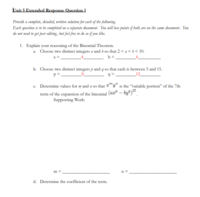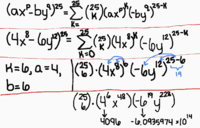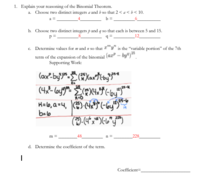Hello!
As per the requests of past Helpers, I will be including an image below rather than a PDF. I am unsure of what exactly the worksheet is asking me to do in question 1c. Would someone mind explaining to me how I should approach this, or breaking down what exactly the question wants me to do?
The writing in red is numbers that I have chosen. I chose these numbers at random, just whatever sounded best to me.
Thanks!
NOTE: Before someone tells me that I need to post my work, (no work=no help) I honestly have no idea of how to go about this. I do not have any work to provide you with because I don't even know how to go about attempting this question.

As per the requests of past Helpers, I will be including an image below rather than a PDF. I am unsure of what exactly the worksheet is asking me to do in question 1c. Would someone mind explaining to me how I should approach this, or breaking down what exactly the question wants me to do?
The writing in red is numbers that I have chosen. I chose these numbers at random, just whatever sounded best to me.
Thanks!
NOTE: Before someone tells me that I need to post my work, (no work=no help) I honestly have no idea of how to go about this. I do not have any work to provide you with because I don't even know how to go about attempting this question.






